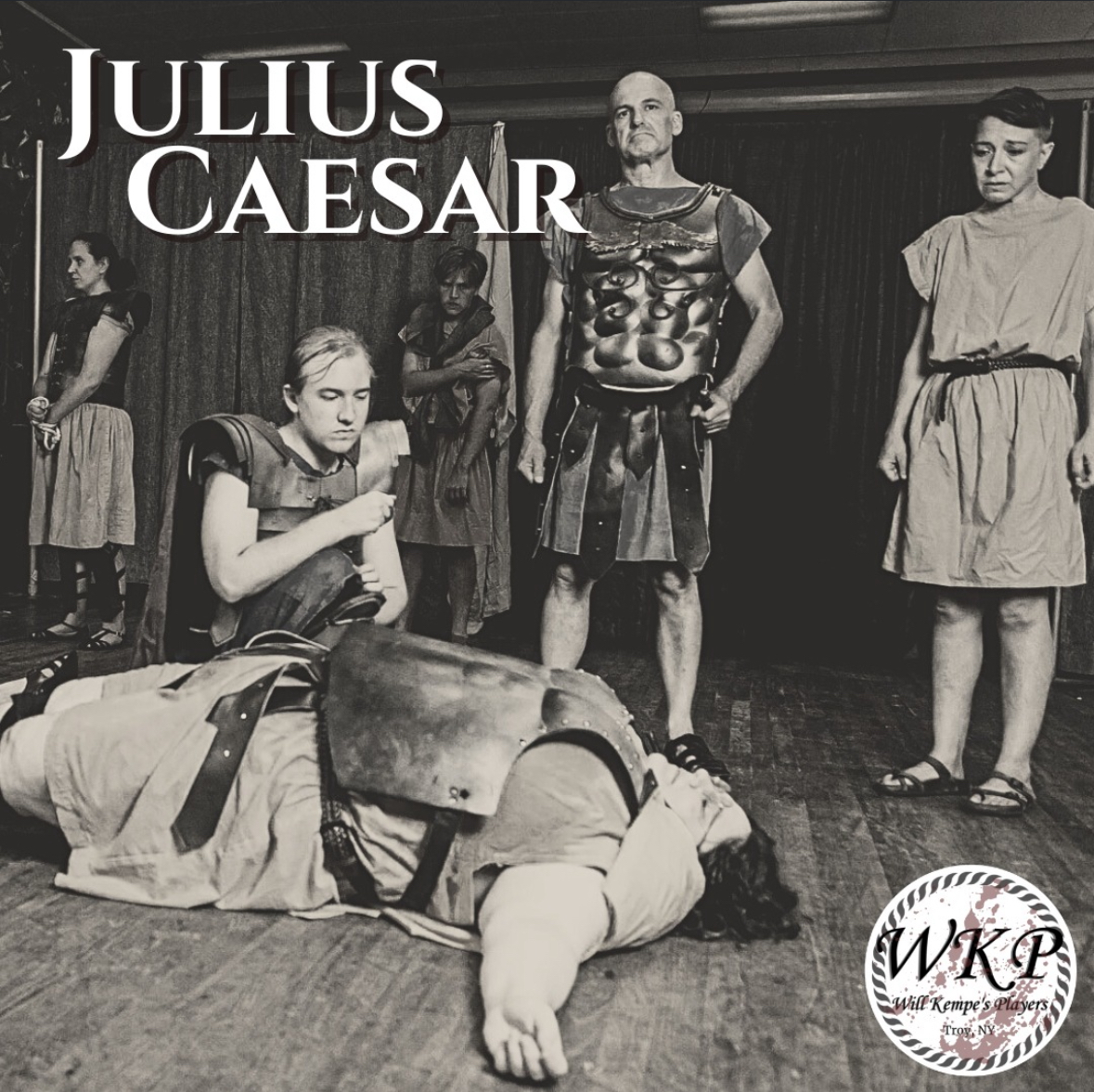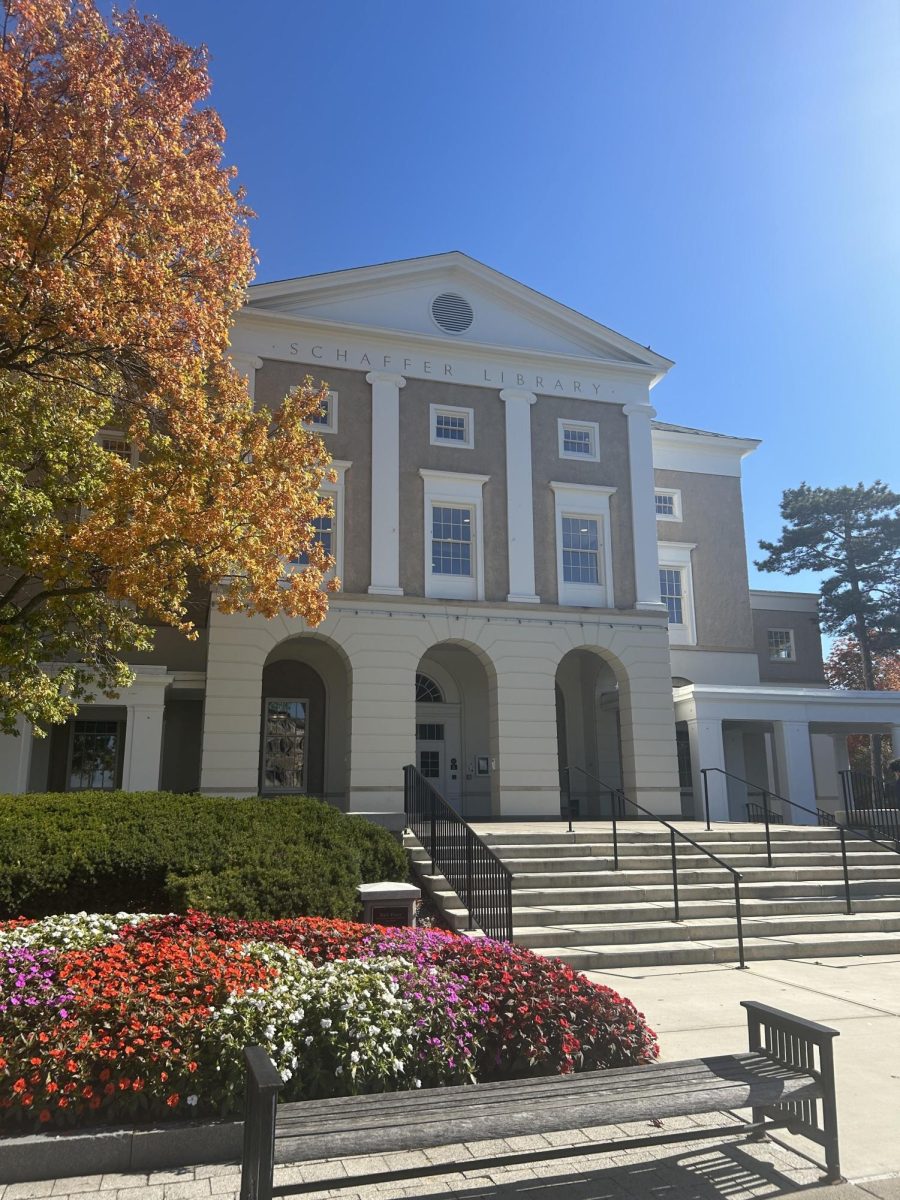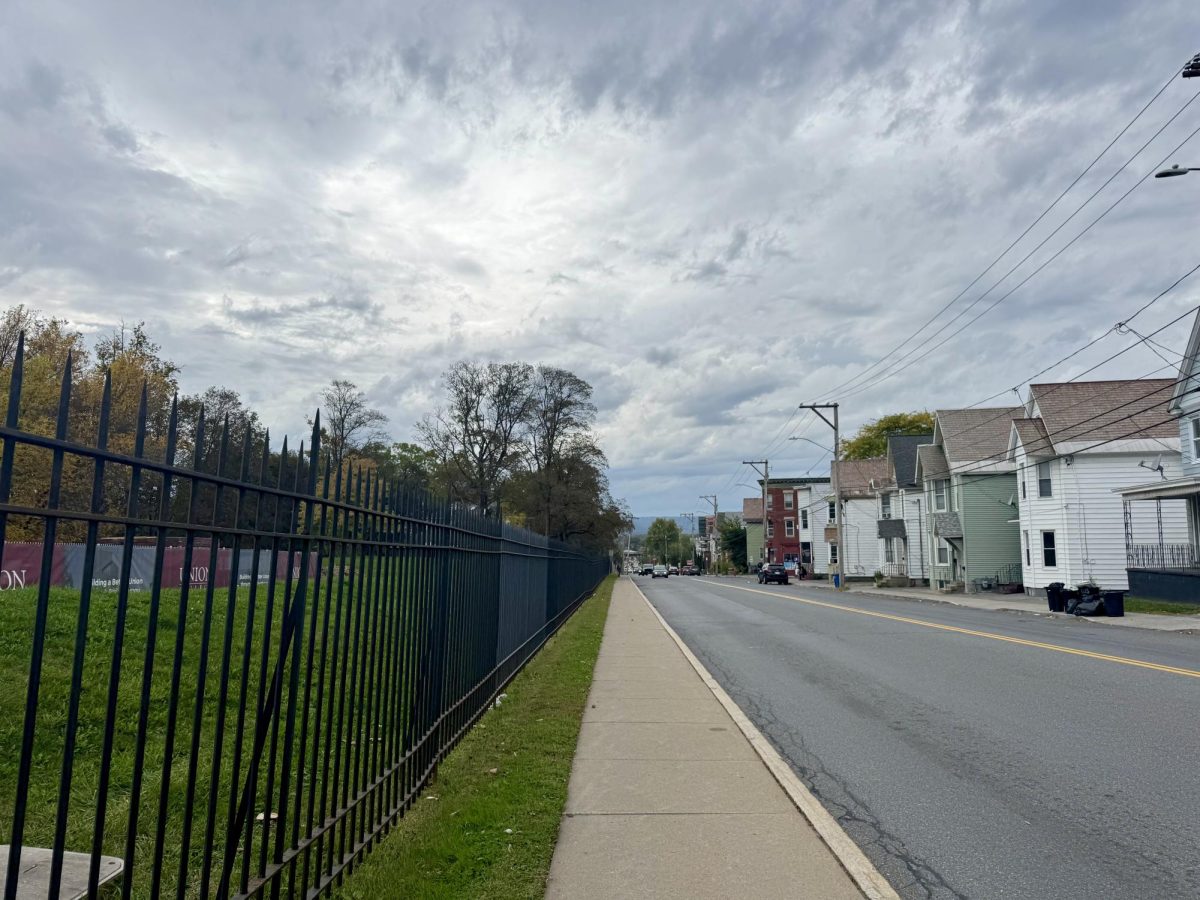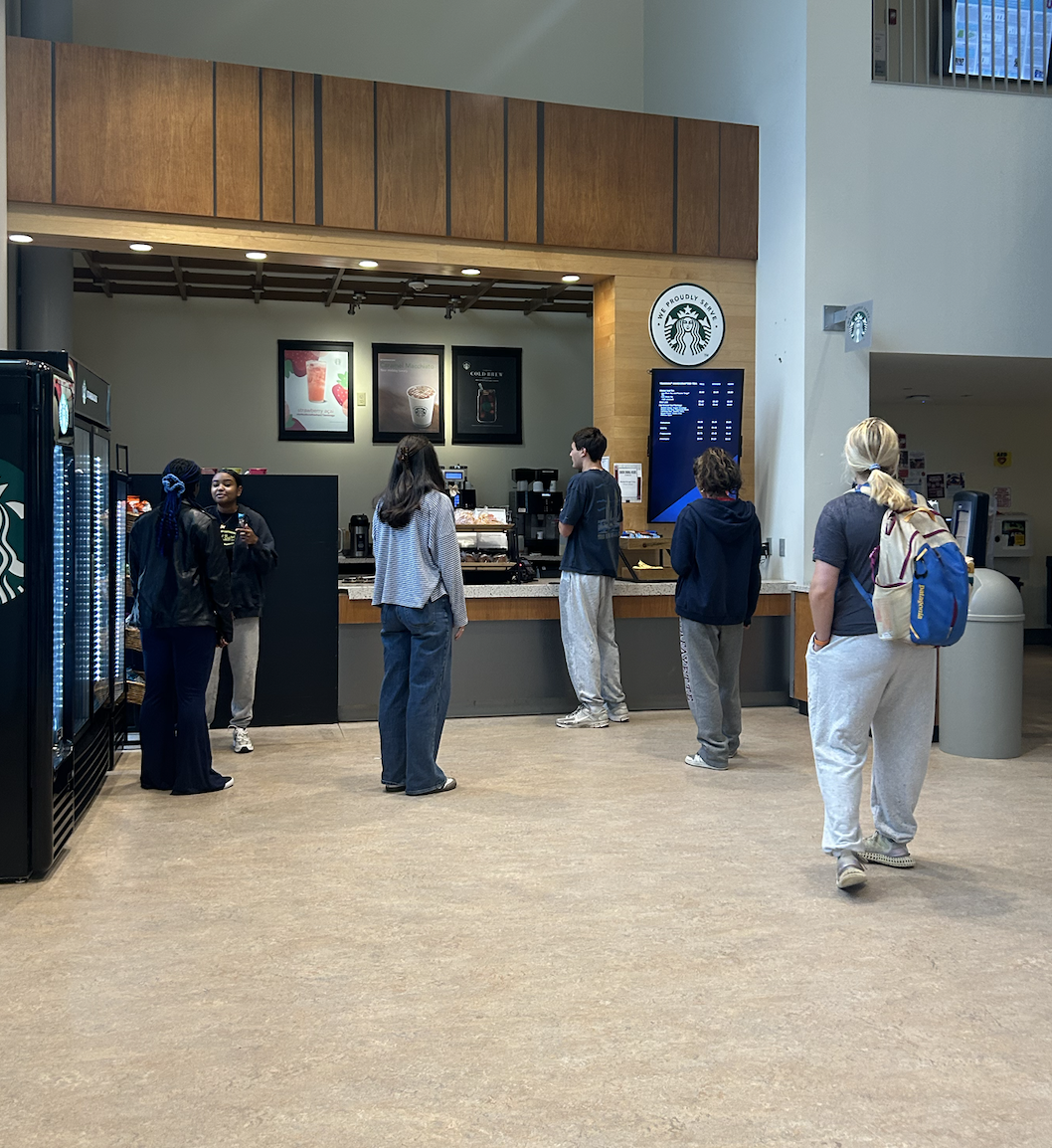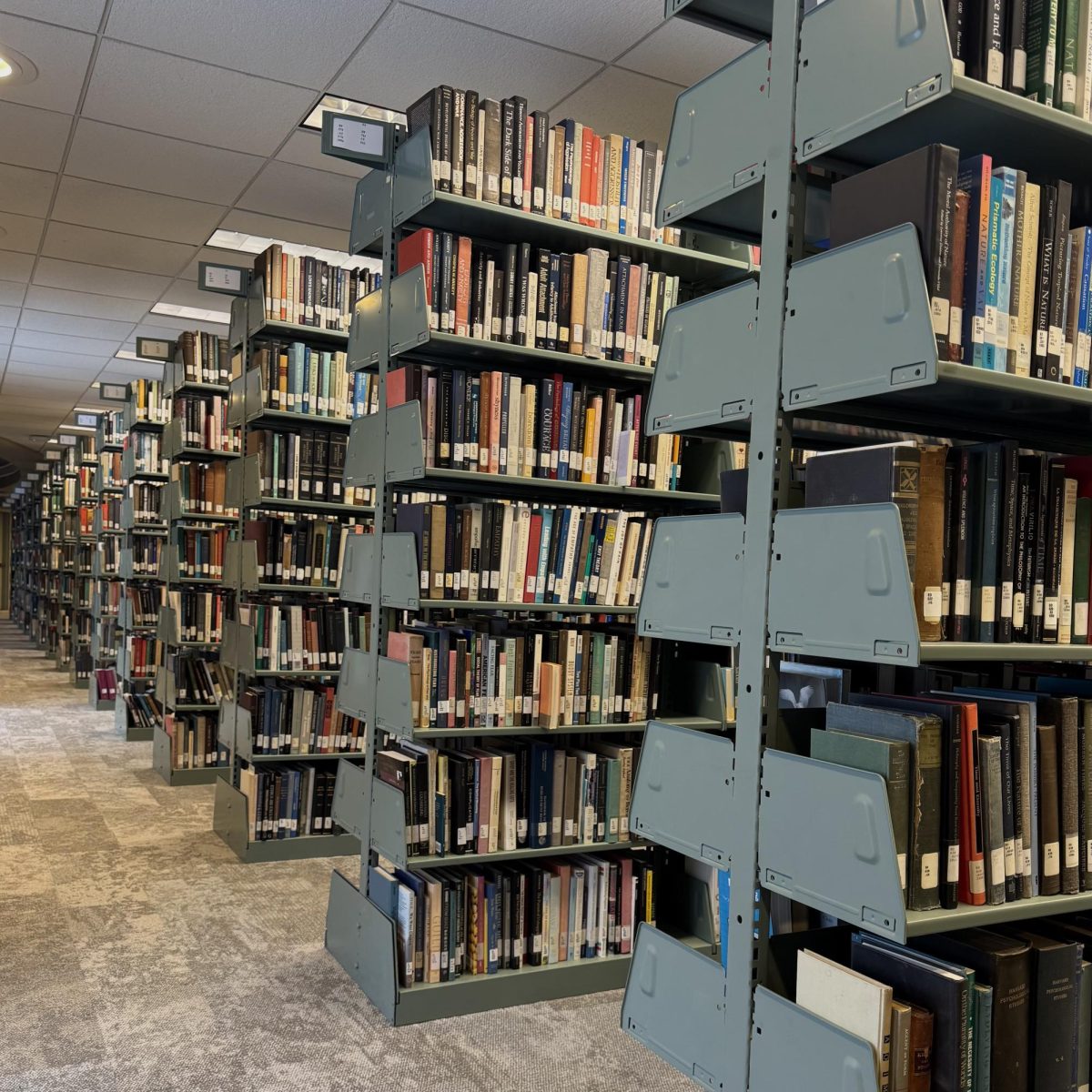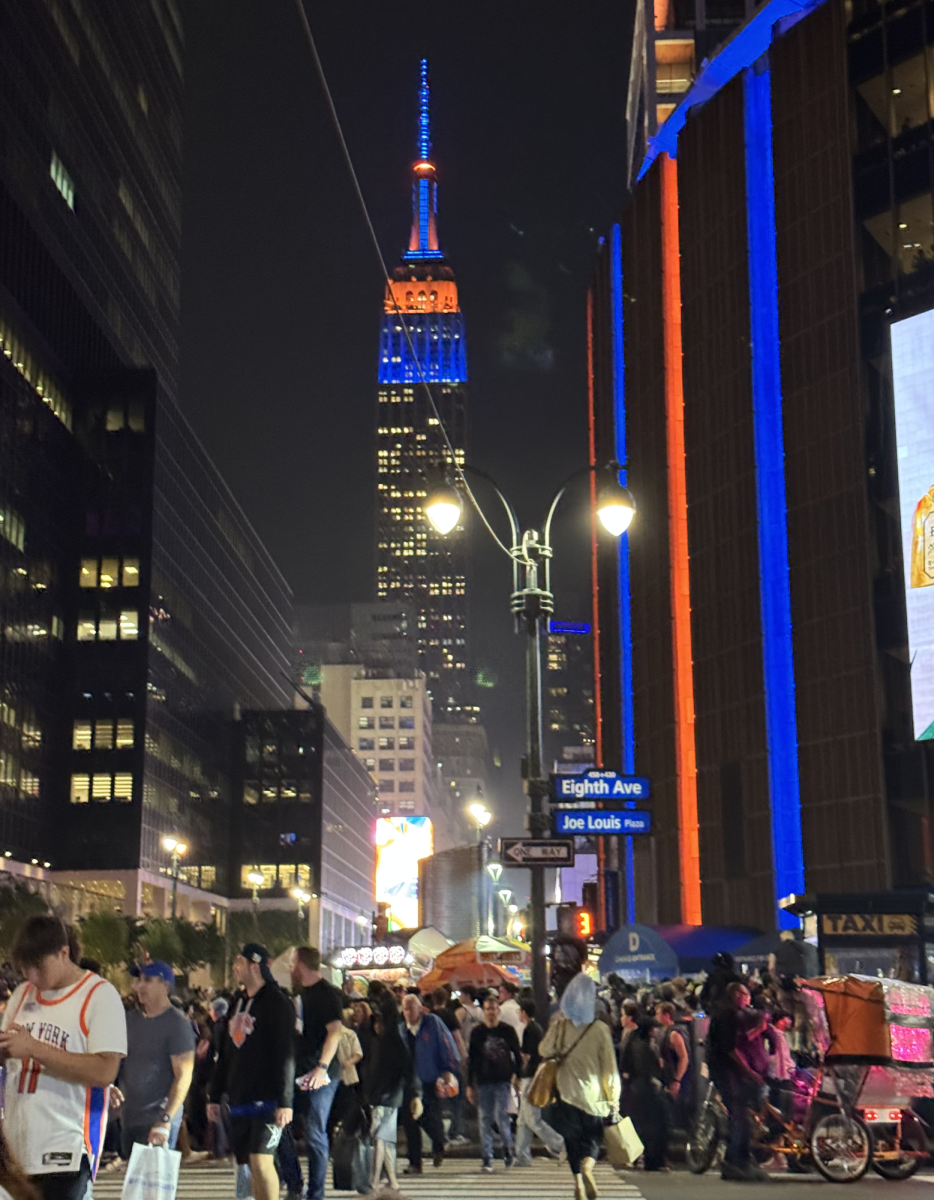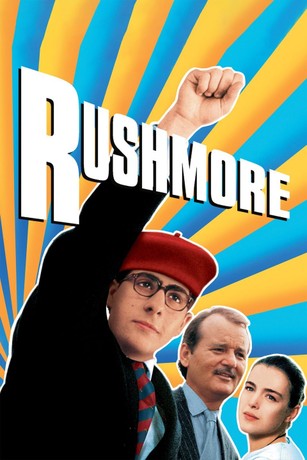On September 17, Union College’s Old Chapel transformed into a scene of ancient Rome. With the lights still on and a ground-level stage, Will Kempe’s Players performed a traditional style of the Shakespearean play ‘Julius Caesar.’ The combination of contemporary music hits, crowd engagement, and accurate use of stage directions transported the audience into a historically accurate Shakespeare performance like none other.
In the year 1599, electricity had not yet been invented, which meant that there were no ways to hold night shows in the theater. To combat the use of hundreds of small candles, the power of sunlight was put to work. Shakespeare’s Globe Theater performed only during the day, and Will Kempe’s Players did just the same.
Walking into Old Chapel, rows of chairs surrounded a thin black mat acting as the stage. Once the crowd began to settle, two actors emerged from the curtains playing the song “Shelter From the Storm” by Bob Dylan. This was one of the many strategic pieces creating an accurate Shakespearean performance: music well-known to the time of the production. This continued later on with the performance of “For What It’s Worth” by Buffalo Springfield to end the intermission. The crowd sang along, realizing that audience engagement was encouraged.
Singing along was not the only form of participation. One lucky student was dragged on stage to mourn Caesar as he tragically and slowly passed away. Although there were no prepared lines, they adapted to the role well with the aid of fellow actors. In the original Globe Theater performances, theater goers were pulled upon stage, entering the realm of the given Shakespearean play.
With the attempt to create an authentic environment, there were varying opinions on the performance. One anonymous Union professor complained that there was “difficulty viewing over others’ heads, difficulty hearing, and the costume design felt underwhelming.” With the goal of keeping things traditional, like the lack of microphones and ground level performance, crowd members in the further rows had a diminished experience. If one wasn’t in the first row, the performance could be underwhelming.
On the other hand, English Professor Pattie Wareh thoroughly enjoyed Will Kempe’s Players’ take on Julius Caesar. She remarks that “The interaction with the audience is a huge part of how Shakespeare’s theatre works and I wanted to give that as a gift to my students.” Professor Wareh truly appreciated the participatory aspects, which gave students the opportunity to go beyond their comfort zones.
“The performers had really invited the audience to understand that they were the Roman people in a way, so it’s a natural extension of that for someone to have come onstage and join the cast as a Roman plebeian, and I don’t think I’ve ever seen anything like that,” exclaimed Professor Wareh.
Although lacking the dramatic flair of many of today’s commercial theatre productions, seeing an eye-level and brightly lit play is sadly now unusual. Although further rows may have obstructions, the front rows relish in close views and one-to-one interactions with the actors.
With modernity, society forgets that theater didn’t always have booming sound systems, fancy lighting, and heightened rows of chairs. This may not be everyone’s cup of tea, but it served Shakespeare’s traditional style of performed theater.


